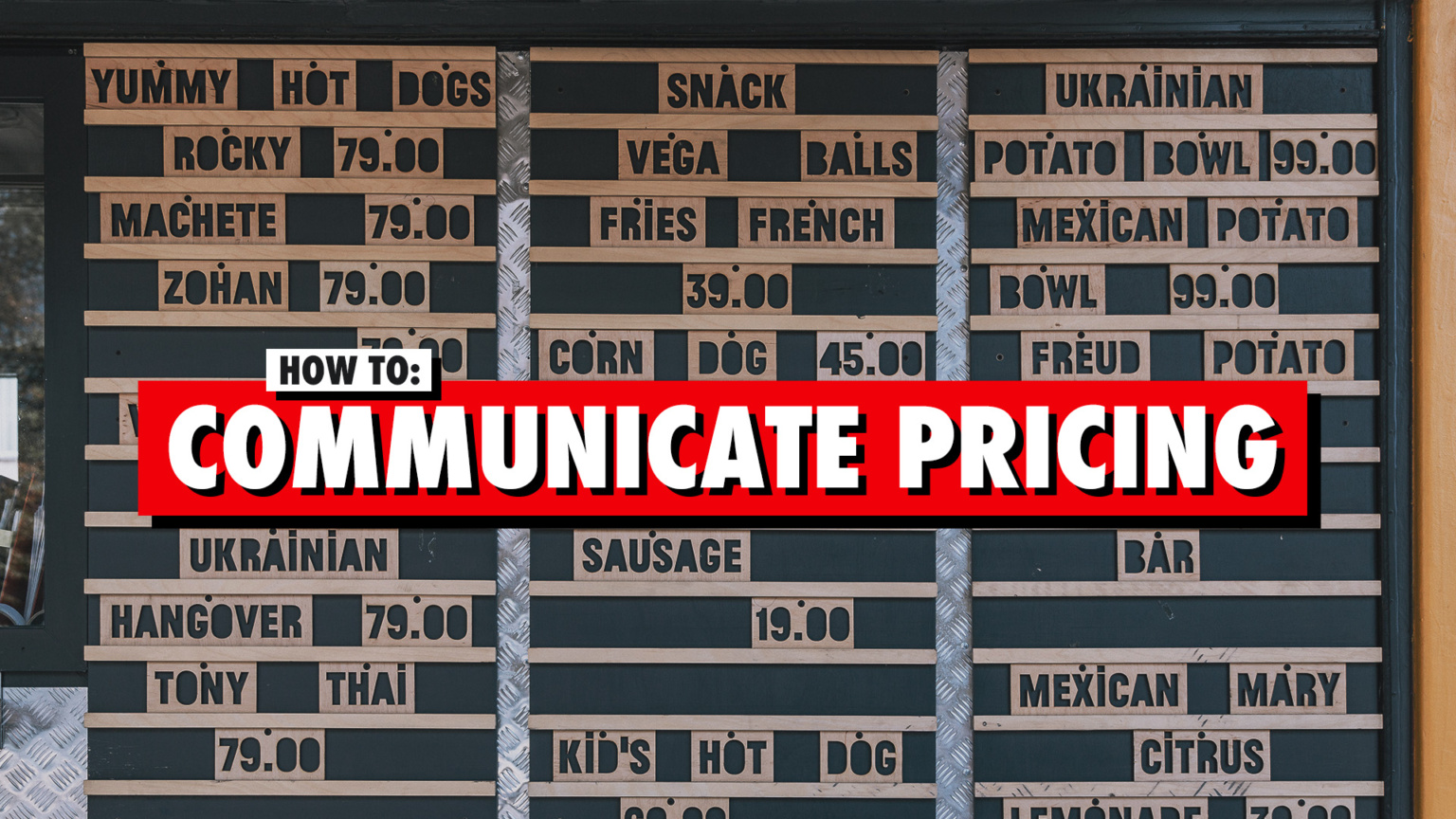- Blog, Sell Product, Sell Service
How to Communicate Pricing

Customers need to know your prices. Read this quick article to learn how you can effectively communicate pricing with your target audience.
Mastering the art of communicating pricing is an essential skill that can greatly influence business success and stakeholder relationships. Whether you’re a salesperson, manager, executive, CEO, or aspiring public speaker, here are five key strategies to enhance your pricing communication:
1. VALUE CENTRIC APPROACH
Effective pricing communication is not just about numbers; it’s about the value your product or service delivers. Instead of fixating on the price, emphasise the benefits and solutions your offering provides to customers. Whether you’re speaking to sales staff, executives, or a broader audience, weaving in real-life success stories can vividly illustrate this value proposition. For example, highlight how your software solution streamlined a client’s operations, resulting in significant time and cost savings.
2. TRANSPARENCY & JUSTIFICATION
Transparency in pricing builds trust and credibility. Clearly break down the components that contribute to the final price, such as production costs, research and development expenses, and any external factors like market trends. This approach assures stakeholders that the price is grounded in rationale and fairness. Executives and CEOs can benefit from adopting this approach, as it reinforces the company’s commitment to ethical business practices.
3. Audience Segmentation
Tailoring your pricing communication to different audiences is crucial. Sales staff might require a detailed understanding of pricing tiers to effectively address customer queries. Management and executives, on the other hand, need a broader view of how pricing aligns with the company’s goals and industry trends. Customise your message to resonate with each group’s interests and priorities. Public speakers can apply this strategy by researching their audience’s background and adapting their content accordingly.
4. Visual Aids for Clarity
Visual aids are potent tools for simplifying complex pricing information. Use graphs, charts, and infographics to visually represent pricing structures, discounts, and value-added features. These visual aids make it easier for stakeholders to grasp the information and make informed decisions. For instance, executives can better understand the distribution of costs across different departments through well-designed visuals.
5. Handling Objections Gracefully
Addressing pricing objections is an essential skill. Equip yourself with data and well-crafted responses to counter objections confidently. Acknowledge concerns and provide relevant information to assuage doubts. Demonstrating your understanding of potential concerns highlights your professionalism and can make a significant impact on closing deals, influencing management decisions, or engaging an audience. This skill is particularly important for sales staff and public speakers who encounter objections frequently.
Effective pricing communication is a multifaceted skill that requires finesse and adaptation. By focusing on value, practicing transparency, tailoring messages, utilising visual aids, and mastering objection handling, you can enhance your ability to convey pricing information across various contexts. Whether you’re in sales, management, an executive role, or aspiring to excel in public speaking, these strategies will empower you to navigate pricing discussions with confidence, credibility, and impact.
Other related articles.
How to captivate your audience
5 Key Business Lessons From Hit Show ‘Bluey’
How to Close More Sales With Social Selling
Leadership Lessons from Obama’s Pivotal Moment
How to Build Buyer Trust – Part 2
Unlocking Sales Success: Harnessing AI to Close More Deals
5 Tips for your next sales discovery calls
5 Cognitive Biases Every Salesperson Should Master
What Made Martin Luther King Jr’s Famous Speech so Powerful?
How to Use Your Hands Effectively When Giving a Speech
Explorer Mike Horn’s Key for Productivity
Trevor Ambrose is an international training and coaching company located in the Gold Coast in Australia. We focus on sales and public speaking training.




























